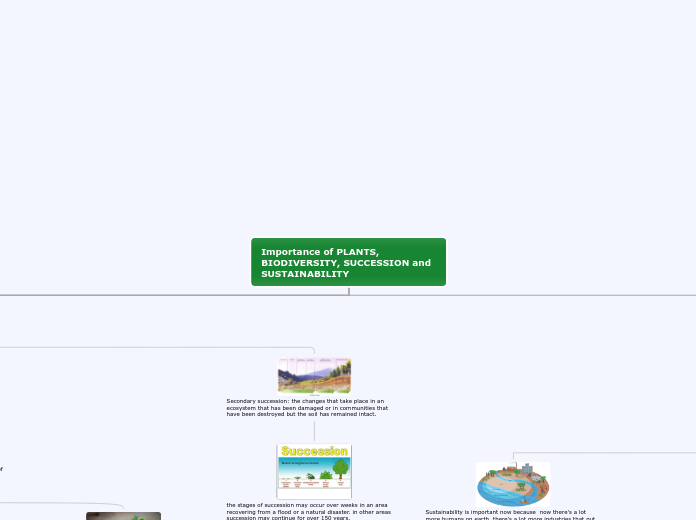da Afzal Shmile mancano 4 anni
629
Organigram

da Afzal Shmile mancano 4 anni
629

Più simili a questo
Extinction is taken importantly because it can lead to ownfall for everyone.
As species disappear, infectious diseases rise in humans and throughout the animal kingdom, so extinctions directly affect our health and chances for survival as a species
some factors are
agriculture
Agriculture is the art and science of cultivating the soil, growing crops and raising livestock.
It includes the preparation of plant and animal products for people to use and their distribution to markets.
Agriculture provides most of the world's food and fabrics
natural disasters
a natural event such as a flood, earthquake, or hurricane that causes great damage or loss of life
avalanches
floods
Earthquakes
Hurricane, Typhoons & Cyclones
pollution
Pollution is the introduction of contaminants into the natural environment that cause adverse change.
Pollution can take the form of chemical substances or energy, such as noise, heat or light. Pollutants, the components of pollution, can be either foreign substances/energies or naturally occurring contaminants
green house gas release
Greenhouse gas, any gas that has the property of absorbing infrared radiation (net heat energy) emitted from Earth's surface and reradiating it back to Earth's surface, thus contributing to the greenhouse effect.
deforestation
clear cutting, removing of forest or trees to make room for other uses
soil erosion increases, water cycling changes and the habitats and and food sources for many animals are destroyed.
when plants are removed from there ecosystems, their importance as the anchor for an ecosystem becomes evident.
if clean water and good soil become rare enough all life on earth can become extinct. if sustainability does not happen, then ecosystems will change and alter in negative ways. some of our resources such as water may not be there. we rely on the earth if we cant make it sustain, generations to come will have a harder time living till there's nothing to live of anymore.
we need to use different energy sources that don't harm the environment. use every bit of energy we produce and not let it get lost. but even small things we can do for the environment would help a lot. if we could do more and different kinds of recycling and not put as many wastes in the earth it would make a big difference.
Identification of management opportunities and hazards.
The type and amount of products or resources and services society can develop and produce, and
How landscapes function for example, water cycle, nutrient cycle, soil formation,
plants
lichens
algae
bacteria
as organisms die, soil starts to build, and so does soil nutrients.
organisms from different species can then use the nutrients from the soil. they may also change the composition of the soil
Everything that lives in an ecosystem is part of the web of life, including humans. Each species of vegetation and each creature has a place on the earth and plays a vital role in the circle of life. Plant, animal, and insect species interact and depend upon one another for what each offers, such as food, shelter, oxygen, and soil enrichment.
In a healthy ecosystem, you need biodiversity especially in Food Webs. With more species, Food Webs can thrive because more biodiversity= more food sources.
Plants provide all basic forms of life with food, water, medication, clothing, and shelter. They are the major source of oxygen and water on Earth, the main things needed for organisms to survive.
Plants provide humans, and other animals as well, with food. Fruits, vegetables, and grains all come from different plants. Livestock mostly consume cereal plants and grass, therefore, providing us with our meat as well.
One of the by-products produced by plants during photosynthesis is oxygen. Oxygen is essential for the survival of all living organisms.
The water cycle is also regulated by plants. Plants play the important role of purifying and distributing the water of the planet. Plants also aid in the movenment of water from the soil to the atmosphere through a process commonly known as 'transpirattion'.
One fourth of the medications prescribed include plants in their ingredients or come directly from plant sources. Medicines acquired from plants include aspirin, quinine, morphine, taxol, and many more. As well, there are thousands of herbal suplements available which are completely derived from plants such as Saint John’s wort, feverfew, ginkgo, and so on.
The three main parts are the roots, the leaves, and the stem. Each part has a an important job to do to keep the plant healthy. The roots absorb water and minerals from the soil and anchor the plant in the ground.
Like humans and animals, plants need both water and nutrients to survive. Most all plants use water to carry moisture and nutrients back and forth between The roots and leaves